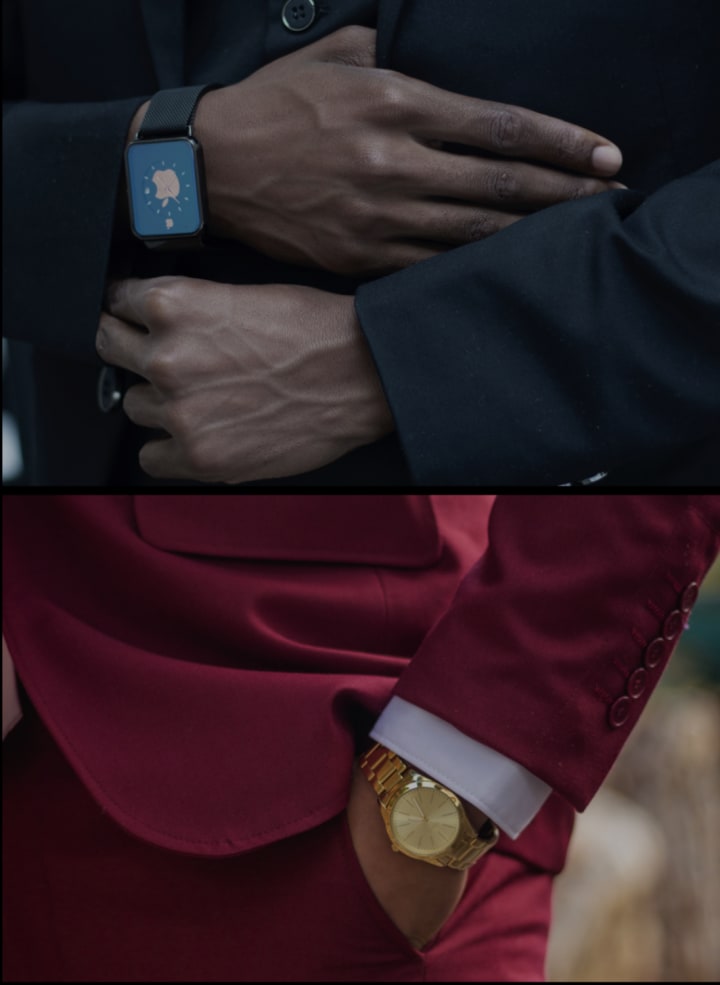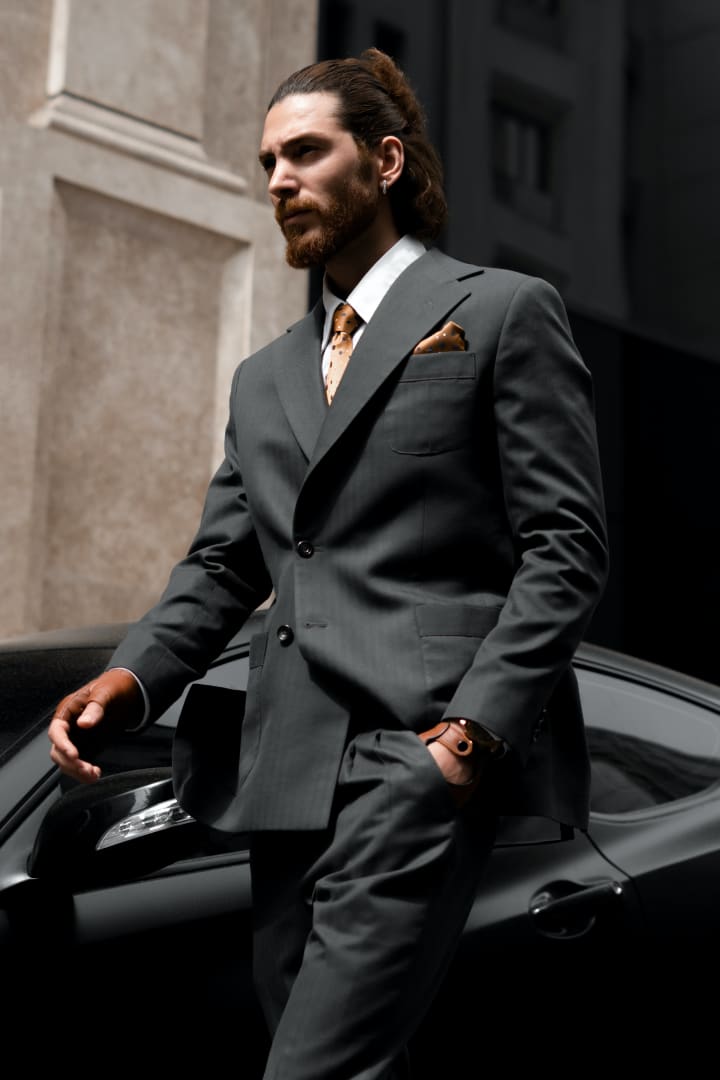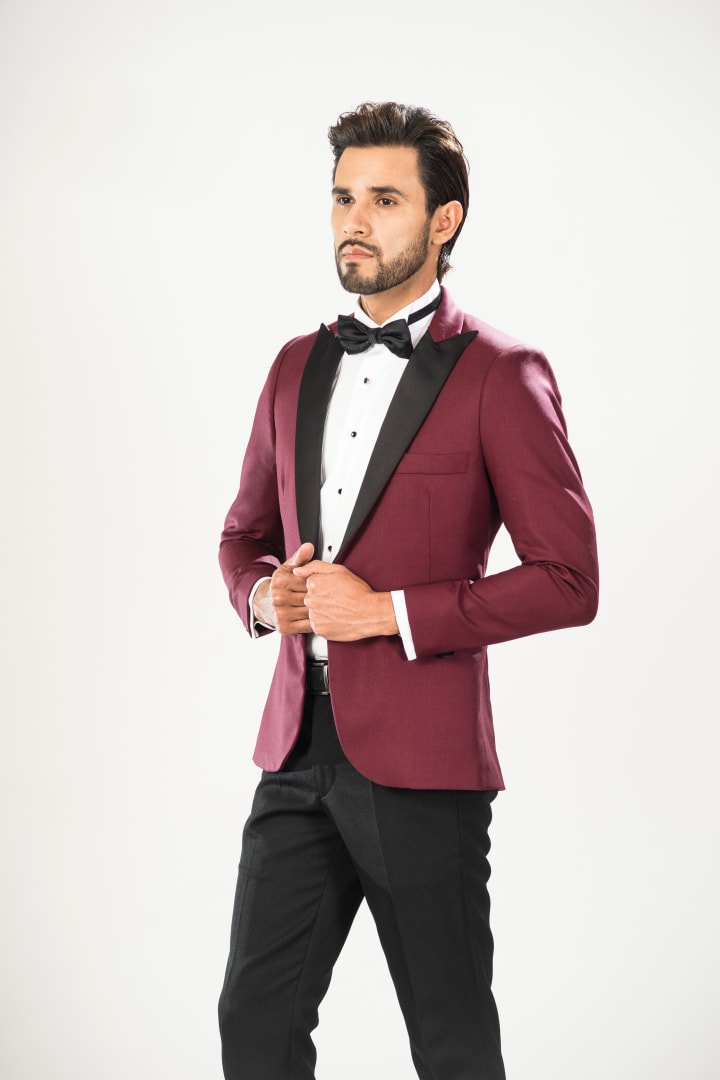HOW TO CHOOSE THE BEST-FITTING SUIT.
Key tips that make the difference.

Fit is subjective in the world of men's fashion. It is influenced by trends. Slim or even slender fits are popular certain years, and looser fits are popular others, such as right now. However, there are some things that are objectively incorrect when it comes to men's clothes. Pants that are three or four inches too long are unflattering on anyone. An enormous jacket with excessively wide shoulders can make you look like a child playing dress up. And, while finding a suit that fits perfectly can be difficult, it's not impossible. You'll know how to nail all the major components of a suit after watching this video, specifically 11 main places that will make you appear and feel like a million bucks.
Before we get into how a suit should fit, we must first define what a suit is. A suit is simply when your jacket and trousers are the same colour and made of the same fabric. So that's what we're going to talk about today. Keep in mind, however, that the ideal fit for a suit jacket or suit trousers is the same as for a sport coat, blazer or odd trousers.So you can apply what you've learned in this article to both your suits and your work casual attire.
You may be wondering, "Does suit fit really matter?" It does so because an ill-fitting suit is one of the least flattering things a man can wear. It makes no difference how much it cost, what colour it is, or what kind of cloth it is made of. It's not going to help you if it doesn't fit. It will make you appear reckless and sloppy. This happens a lot at weddings, especially with rented tuxedos and suits. They just look awful. A well-tailored suit, on the other hand, looks fantastic on everybody, regardless of age, height, or weight. It's one of the most powerful clothes a man can wear. If you want to be treated seriously, show respect for a formal function, or simply seem exceptionally gorgeous. So, given the choice between a three thousand dollar luxury suit from some designer that doesn't fit properly and a three hundred dollar suit made of polyester that fits wonderfully, I'd take the 300 outfit every time.
Let us now discuss suit fit. Remember, I'm demonstrating how I prefer suits to fit. Certain minor aspects, such as the length of your trousers and the style of your jacket, may be determined by your personal tastes. However, this guide will work for 99% of males.
- The top part.

Begin at the top of the outfit, with the collar. There should be no space between your jacket and shirt collars. Even when you're sitting, your jacket collar should be right up against your shirt collar. If there is a gap, it indicates that your jacket collar is too large, which can be corrected by an experienced tailor. It could also be the result of a more complex issue. If you buy a suit off the rack, ensure sure the collar fits well and there is no gap. Moving down to the shoulders, check for divots on top of or on the sides of your shoulders. The shoulders of your suit should have an even slope all the way down to where they attach to your sleeve below the shoulder seam. If they do not, it may indicate that the shoulders are overly wide. Some folks have one shoulder that is much lower than the other, in which case you might consider going custom. However, your jacket's shoulder should terminate where your actual shoulder ends. As a result, that seam should be directly on top of your shoulder bone. There should be no divots or puddling on the top of the arm. To assess shoulder fit, simply lean against a wall and feel if the shoulder pads of your jacket reach the wall before your actual shoulder and arm. If they do, it's too broad. If, on the other hand, your arm hits the wall first, it could signify that your jacket's shoulders are too thin, resulting in divots directly below that seam. likewise, if the shoulders are excessively thin, it will be uncomfortable. When you flex, you'll get a sense of it. When purchasing a suit jacket or a sport coat, it is critical to ensure that the shoulders fit properly because this cannot be corrected at the tailor.
Similarly, if you see any horizontal stripes on the back of your jacket or feel any pulling when you do this with your arms, the top of the back is definitely too tight. There is insufficient material, which cannot be corrected at the tailor.
- The arms.

Moving on, let's have a look at the armhole. The armhole should be as high as possible without feeling too tight or constraining. A higher and smaller armhole, contrary to popular belief, allows for more movement. If you button your jacket and raise your arms, and the jacket quickly rises with your arms, the armhole is likely too large and too low. Unfortunately, many off-the-rack suits, particularly in the United States, have unusually big and low armholes in order to accommodate as many men as possible. Again, this is not something that can be addressed at the tailor. If you have issues with off-the-rack armholes, consider getting custom. But don't go too far. It's probably a little too small if you feel the kind of seam and the fabric up in your armpit and it feels a little constricting.
Let's get to the sleeves now. There should be no large diagonal wrinkles on the sleeve. This type of twisting on the sleeve indicates that the pitch is incorrect. This basically means that the jacket's construction does not correspond to your stance. Everyone is unique. Some people's arms droop forward somewhat when they put their arms by their sides. Some people's arms are straight down. Some people's arms are straight down. Some people withdraw. Some folks turn away. And if the jacket's sleeves don't match the angle or pitch of your actual arms, you'll get that twisting and those wrinkles. Now, sleeve pitch can be adjusted by a qualified tailor, but it will be costly. So, while choosing a jacket, make sure there aren't too many creases on the sleeve. You don't want your sleeves to be overly baggy too. They can be too tight, however, this is usually not the case unless you have the build of a bodybuilder. The sleeve is too tight if you can see the outline of your bicep. The majority of men wear coats with too-baggy sleeves, which can be repaired at a tailor. It's really simple to get a sleeve taken in. In terms of length, your jacket sleeves should be just long enough to display a hint of shirt cuff. It's up to you how much cuff you display, but anything from a sliver to around a quarter inch will work for most males. It's rather simple to get your sleeves trimmed at the tailor, but bear in mind that if they have functional buttonholes, you'll be limited in how much you can shorten them without having to remove them.
- The torso.

Let's take a look at the torso now. When I zip a suit jacket, I want to feel a slight compression, a small pinch around my middle. You don't want a prominent X-shaped wrinkle on your front torso. That suggests your suit jacket is most likely too small. But a little pulling, a little X shape, isn't such a huge thing. Another indicator that your jacket is too tight is if the lapels protrude, leaving a gap between each lapel and your chest. On the other hand, many men wear suit jackets that are far too large. If you see a lot of loose fabric or vertical wrinkles on the front of your chest or torso, or if your jacket just hangs there in space away from your body, it's probably too big. The solution is simple. You've simply had your waist reduced.
Let's talk about jacket length now. The customary guideline is that a suit jacket should be long enough to cover your buttocks, but not much further. The cup test is an easy way to determine the length of your suit jacket. So you let your hands hang by your sides and try to cup your fingers around the bottom hem of your jacket. The jacket should terminate about where your fingers naturally cup. If you can't get to the bottom of your jacket, it's too long. Keep in mind that slightly shorter jackets are quite acceptable. Many of my jackets are somewhat shorter. They don't quite make it to the bottom of my buttocks. I can easily cuff them, and I enjoy the effect. I believe it is appropriate for my build. However, if you're trying on a suit in a store, the cup test is a fine place to begin.
- The pants.
Let's get to the trousers. Suit trousers, like any trousers, should be able to remain up without the use of a belt. Why not just ditch the belt, while we're on the subject of belts? For my suit trousers, I prefer side tabs or even braces. If you wear braces, you can wear a little looser waist because the braces will hold your trousers up. This is an excellent choice for larger men. If your trousers are overly big at the waist, any skilled tailor can easily correct that.
Moving on to the rise of the trousers. This determines where your trousers sit on your waist. The rise of the pant refers to the distance between the top of the waistband and the bottom of the crotch. Lower rise trousers result from a shorter distance, whereas greater rise or high-waisted trousers result from a longer distance. I would avoid low-rise suit trousers unless you have a very short torso and very lengthy legs. A mid or even higher rise will look better on the majority of men. And if you're used to wearing low-rise jeans that sit low on your hips, this may feel a little weird. When you put on a pair of higher-waisted suit trousers, they'll sit up closer to your belly button. It's actually very comfortable and has a very pleasing appearance. It lengthens your legs and elevates your perceived waistline. So, if you haven't tried higher-rise suit trousers yet, I encourage you do so.
You want to avoid the droopy diaper butt look around the seat and hips now. You've probably seen this before: males in suit trousers that sag slightly in the back. I'm not saying your trousers should be so tight that they're painful, but they should be near to your hips and buttocks. If your front pockets are flaring out, your trousers are excessively tight through the leg. If you find that this is frequently the case, you might wish to consider pleated trousers. These provide a little more room and flexibility around the hips. Pleats are an excellent alternative for individuals who have a little extra weight in the belly or who prefer to squat a lot. But pleats aren't out if you're a smaller or slimmer guy. A lot of my suit trousers have a single pleat in the front, which I really appreciate and find to be quite comfortable. From your thigh to the leg opening at your ankle, your trousers should have a gentle taper. They should not be hugging your thighs, knees, or calves. There should be no wrinkling around the knee, but they should follow the contour of your leg, which means they will have a slight taper.
Finally, let's talk about trousers length. If you've done any research on this or bought a suit, you've probably heard the term "pants break." The term "break" relates to how long your trousers are and how much of them sit on top of your shoe. For 99% of males, 99% of the time, you'll want a modest break, sometimes known as a partial break or quarter break. This means that your trousers will fold somewhat on top of your shoe. You can also go for the no-break look, in which your trousers barely touch the tops of your shoes. This is a really cool appearance. I believe it's fantastic, especially for shorter men. If you go with no break, make sure your trousers are rather slim and have plenty of taper below the knee. Any shorter than no break will result in a cropped look, which is unsuitable for formal wear. If you go much further, you'll end up with a full break, which is more conservative and traditional, and it's not a great look for most guys, unless you truly want that old-school look. If you choose greater break, such as a full break, make sure your trousers aren't too tapered. You'll want to go with a more straight cut. In general, more taper with less break looks excellent, while broader leg openings with more break appear good. When in doubt, slim-tapered suit trousers with a partial break will work.

In conclusion, a well-fitted suit is a strong piece of clothing that can make a man appear and feel like a million bucks. Understanding the many parts of a suit allows you to wear a suit that looks and feels excellent. I will be writing about impactful tips like this and more, let's elevate our style as gent. If you have any questions, suggestions, or any topic you want me to write to you about concerning men's fashion, please contact me via ([email protected]). Thank you for reading my article, as usual, and till next time, stay stylish.





Comments (1)
This is very insightful.